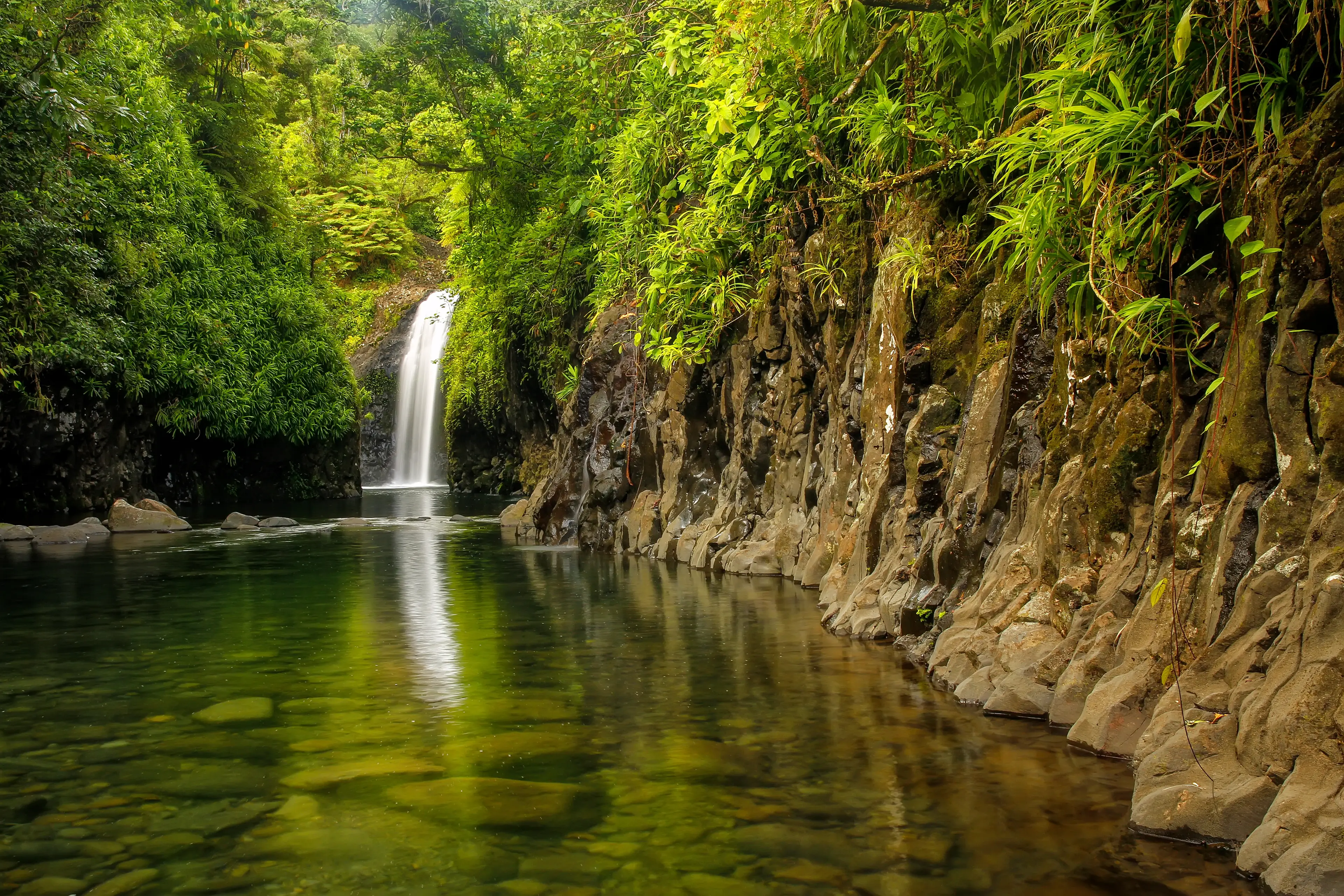2-Day Solo Adventure: Unexplored Outdoor Activities in Fiji
Fiji
2 days
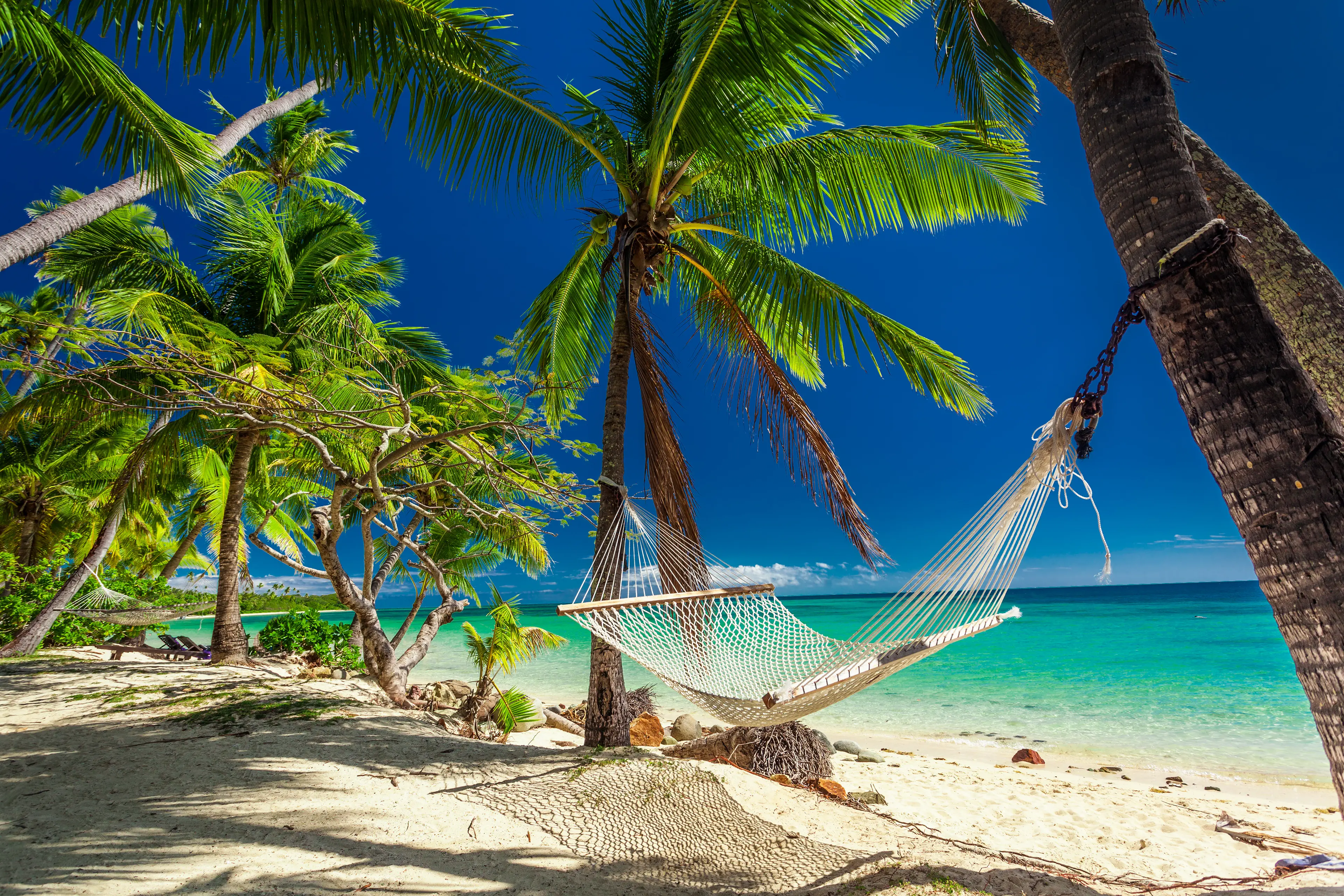
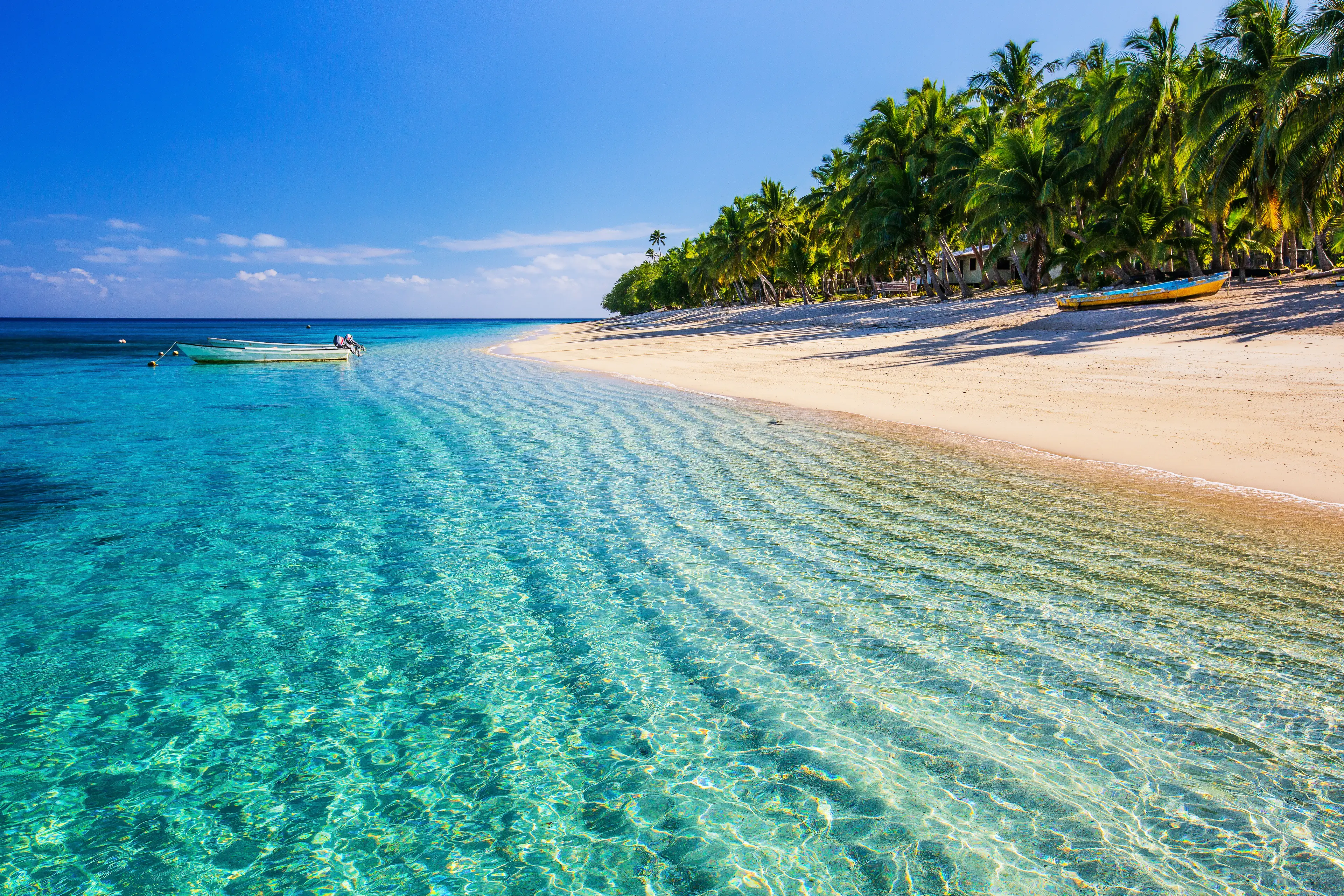
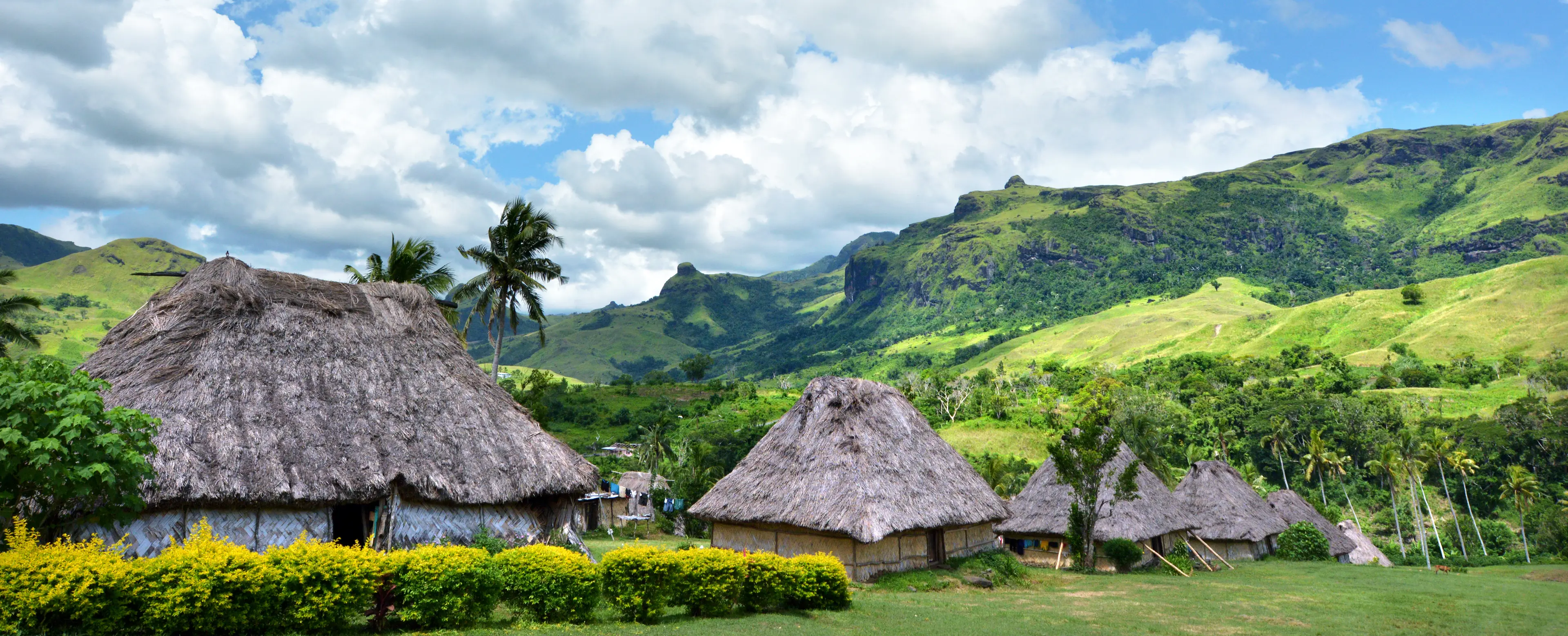
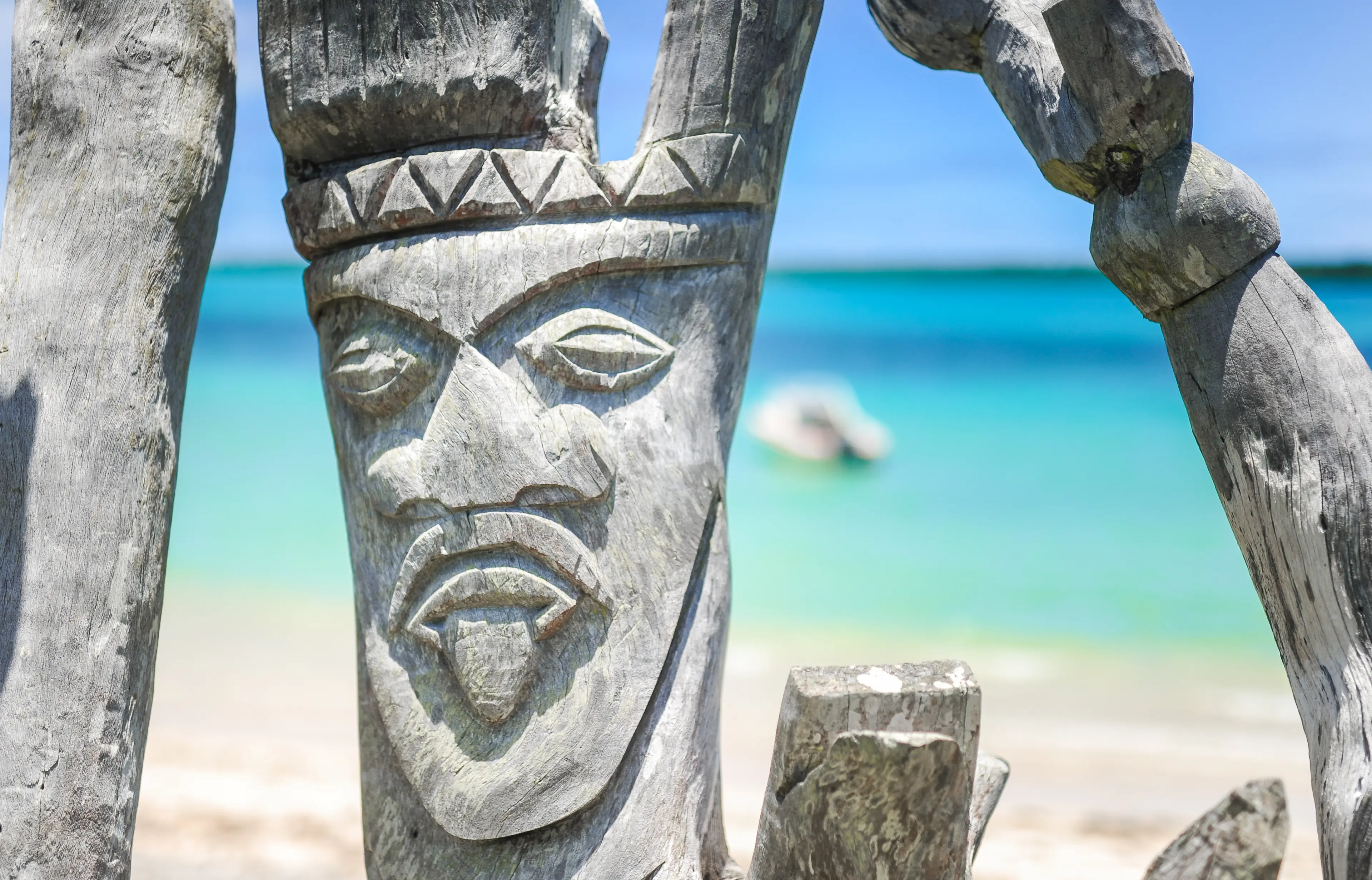
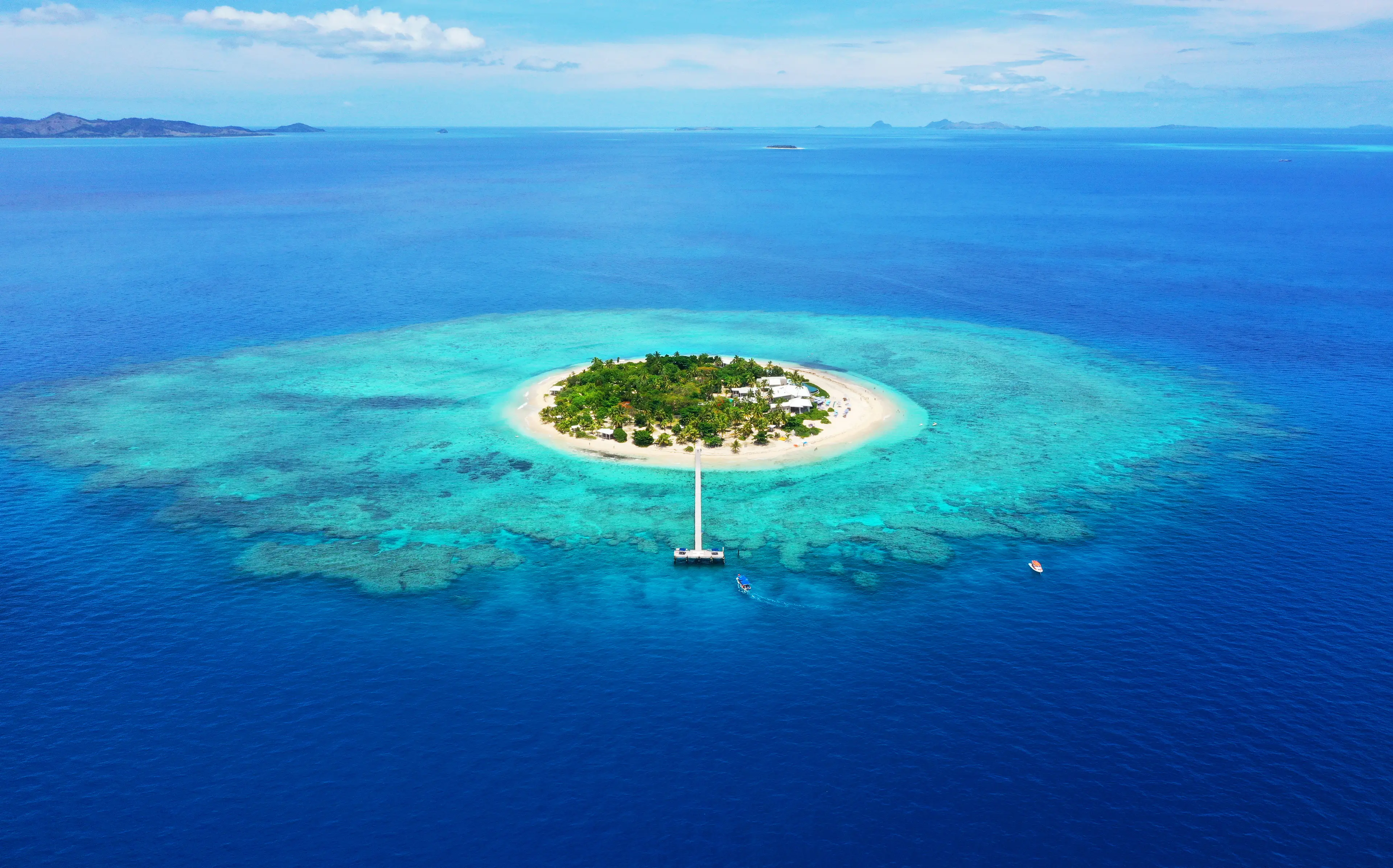
About Fiji
Fiji, a tropical paradise in the South Pacific, is an archipelago of over 300 islands renowned for its stunning beaches, vibrant coral reefs, and lush rainforests. It's a haven for nature lovers, adventure seekers, and those seeking relaxation. Experience the warm hospitality of the Fijian people, immerse yourself in their rich culture, and enjoy traditional music and dance. Explore the Mamanuca and Yasawa Islands, famous for their crystal-clear waters and world-class diving spots. Visit the capital city, Suva, for its colonial architecture, vibrant markets, and fascinating museums. Don't miss the Garden of the Sleeping Giant, home to a vast collection of orchids. Fiji's unique blend of natural beauty, culture, and adventure make it an unforgettable travel destination.
2-Day Itinerary
Day 2
Cultural Immersion and Snorkeling Experience
Morning
Begin your second day with a visit to a local village. Participate in a traditional Kava ceremony and learn about Fijian culture and customs.
Lunch
Have lunch in the village, tasting traditional Fijian food prepared by the locals. This is a great opportunity to interact with the villagers and learn more about their way of life.
Afternoon
Spend the afternoon exploring the coral reefs of Fiji through a snorkeling adventure. Witness the vibrant marine life and colorful corals that make Fiji's underwater world famous.
Dinner
Enjoy your dinner on a Sunset Cruise. As you dine on local cuisine, watch the sun set over the Pacific Ocean, painting the sky with hues of orange and pink.
Evening
End your day with a traditional Fijian fire dancing performance on the beach. The combination of the rhythmic music, the fire, and the ocean creates a truly magical experience.
Attractions in Itinerary (6)
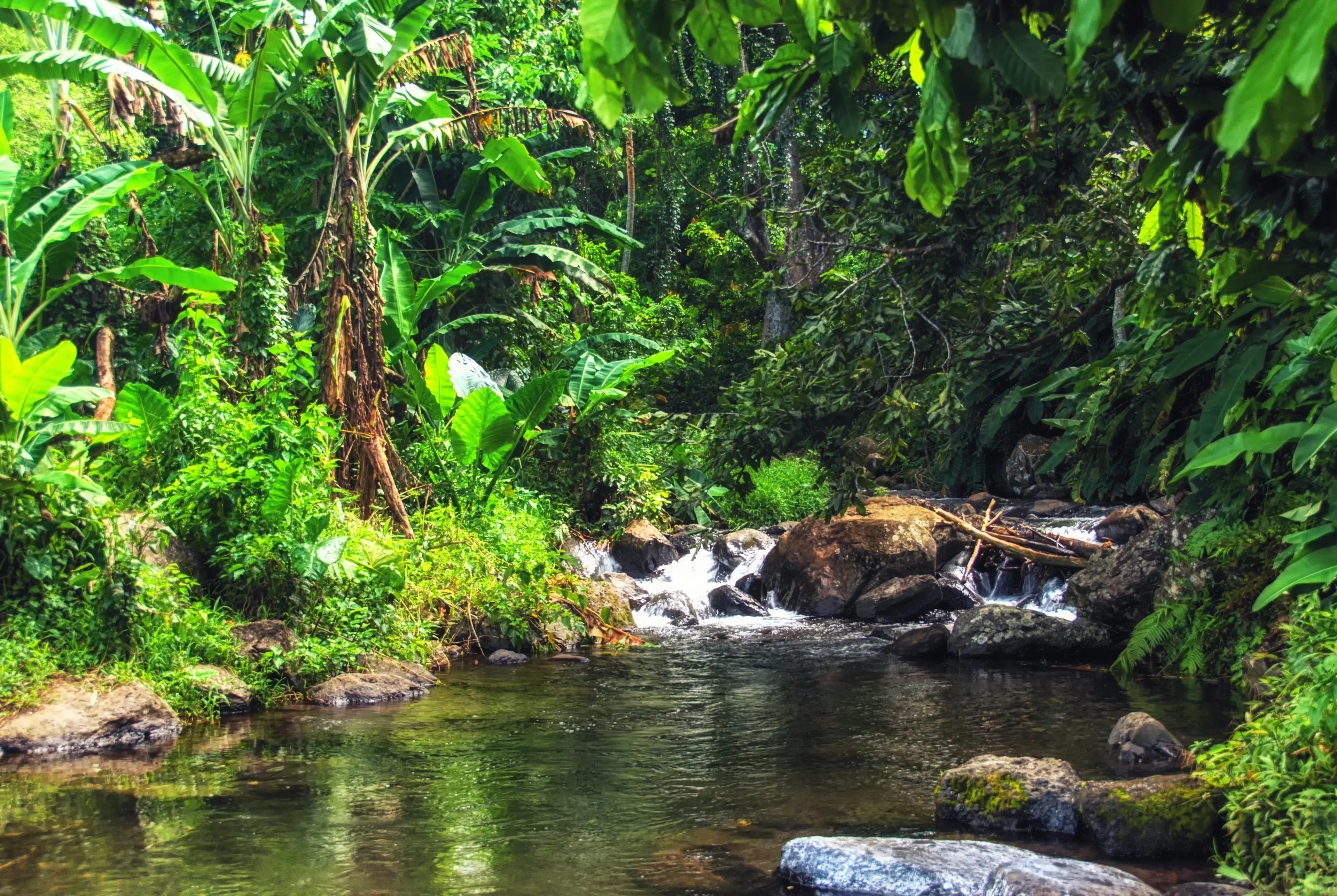
1Rainforests of Fiji
Explore the lush and diverse flora and fauna of Fiji's rainforests. A must-visit for nature lovers.

2Sunset Cruise
Enjoy a romantic sunset cruise in Fiji. The cruise offers breathtaking views of the sunset and a chance to relax and unwind.

3Fijian fire dancing performance
A traditional Fijian performance art, fire dancing is a thrilling spectacle of skill and bravery. Performers dance and twirl flaming torches, often to the beat of traditional Fijian music.

4Fiji's Coral Reefs
Fiji's coral reefs are a paradise for divers and snorkelers. The reefs are home to a diverse range of marine life and offer stunning underwater views.

5Fiji's Rivers
Experience the thrill of river rafting or enjoy a serene boat ride on Fiji's beautiful rivers.
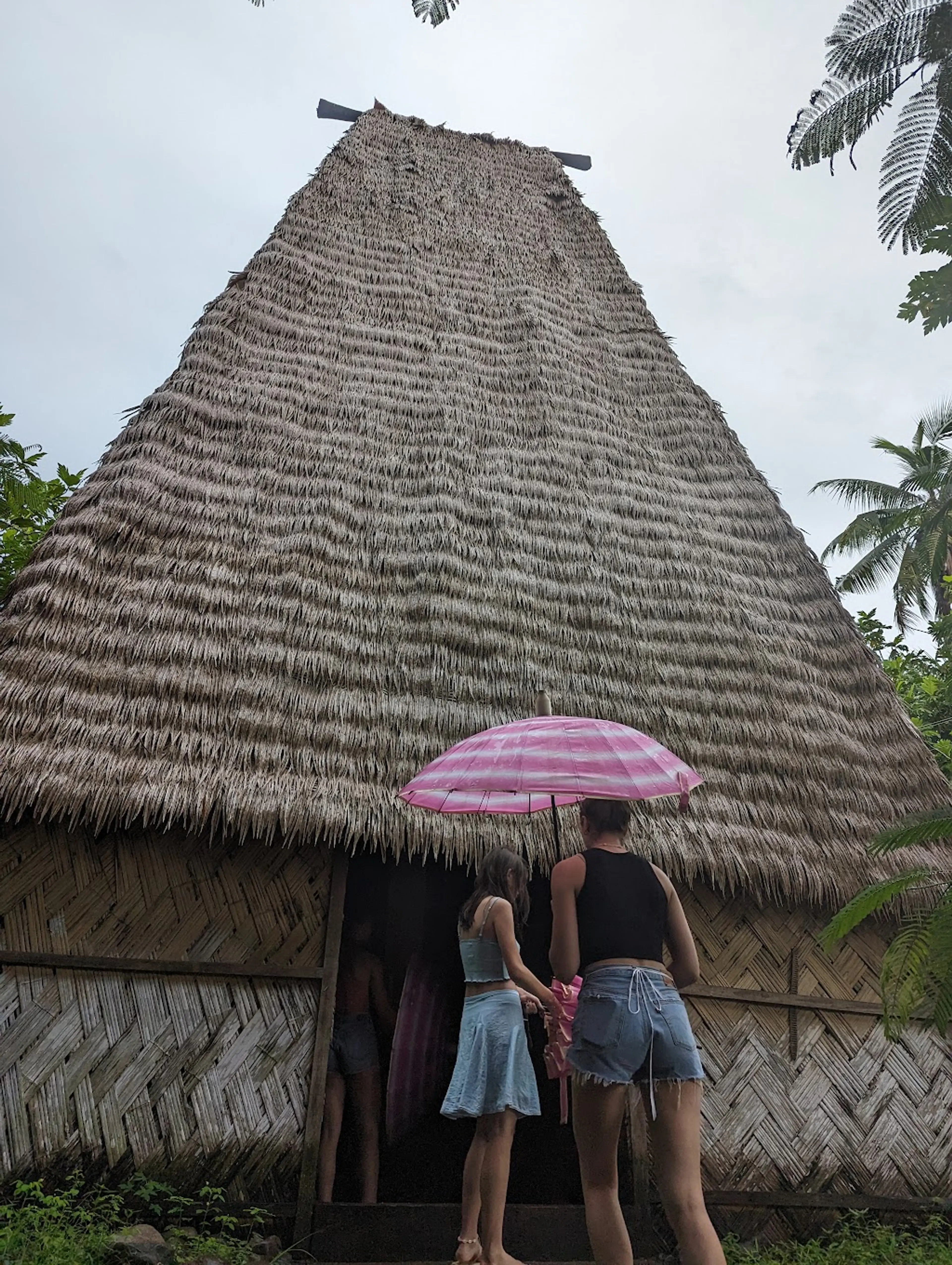
6Fijian Village
Experience the traditional Fijian way of life in these quaint villages. Participate in cultural activities and learn about their customs and traditions.
Local Food and Drinks (12)

Kokoda
A traditional Fijian dish made from raw fish marinated in citrus juice and coconut milk. It is similar to ceviche and is a must-try for seafood lovers visiting Fiji.

Lovo
A traditional Fijian feast cooked in an earth oven. It typically includes meat, fish, and vegetables wrapped in banana leaves and cooked for several hours. It's a popular dish for special occasions in Fiji.
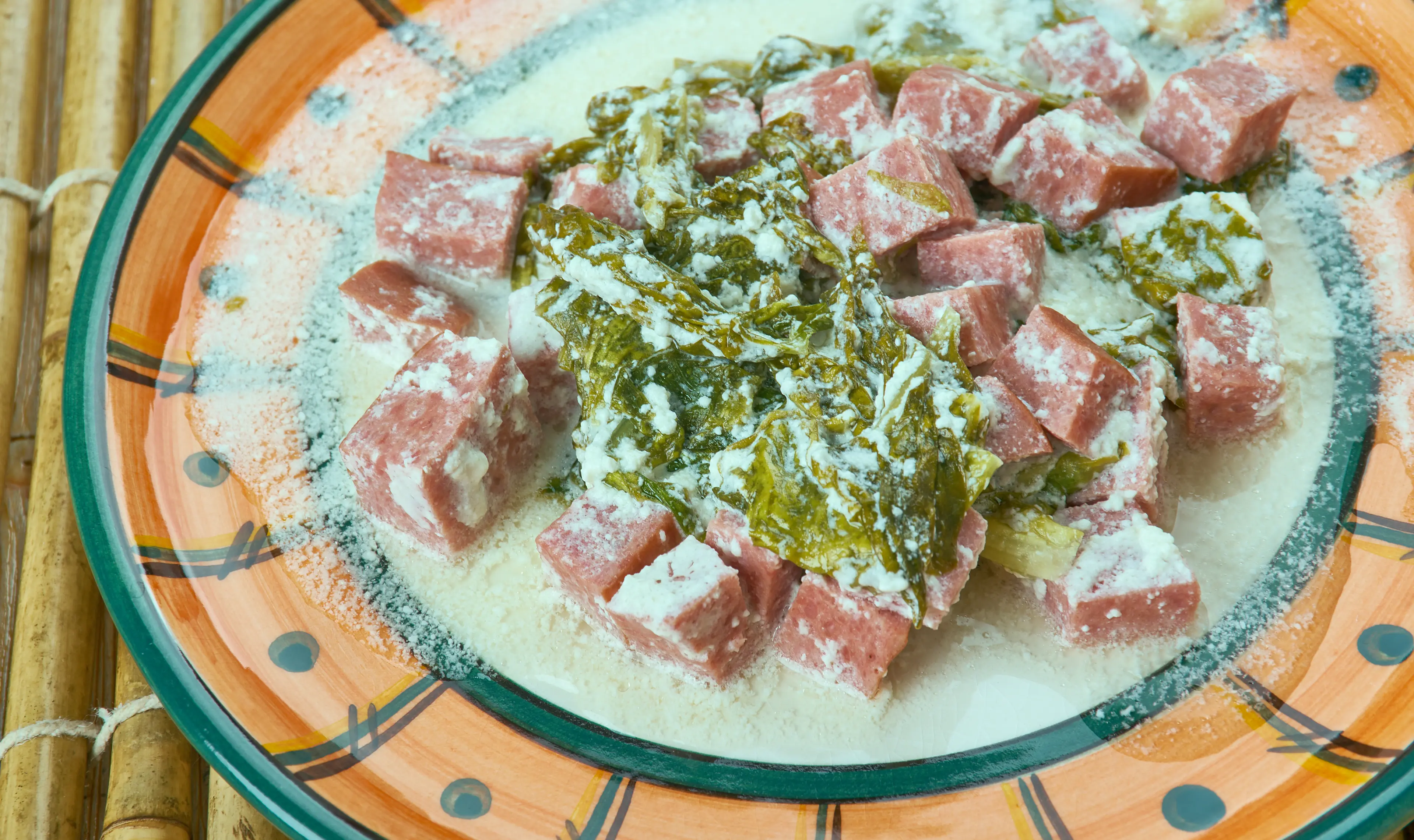
Palusami
A traditional Fijian dish made from taro leaves and coconut milk, often with added meat or fish. It's a staple of the Fijian diet and a must-try for visitors.

Kava
A traditional Fijian drink made from the ground root of the kava plant. It has a mildly sedative effect and is often used in social and ceremonial occasions in Fiji.
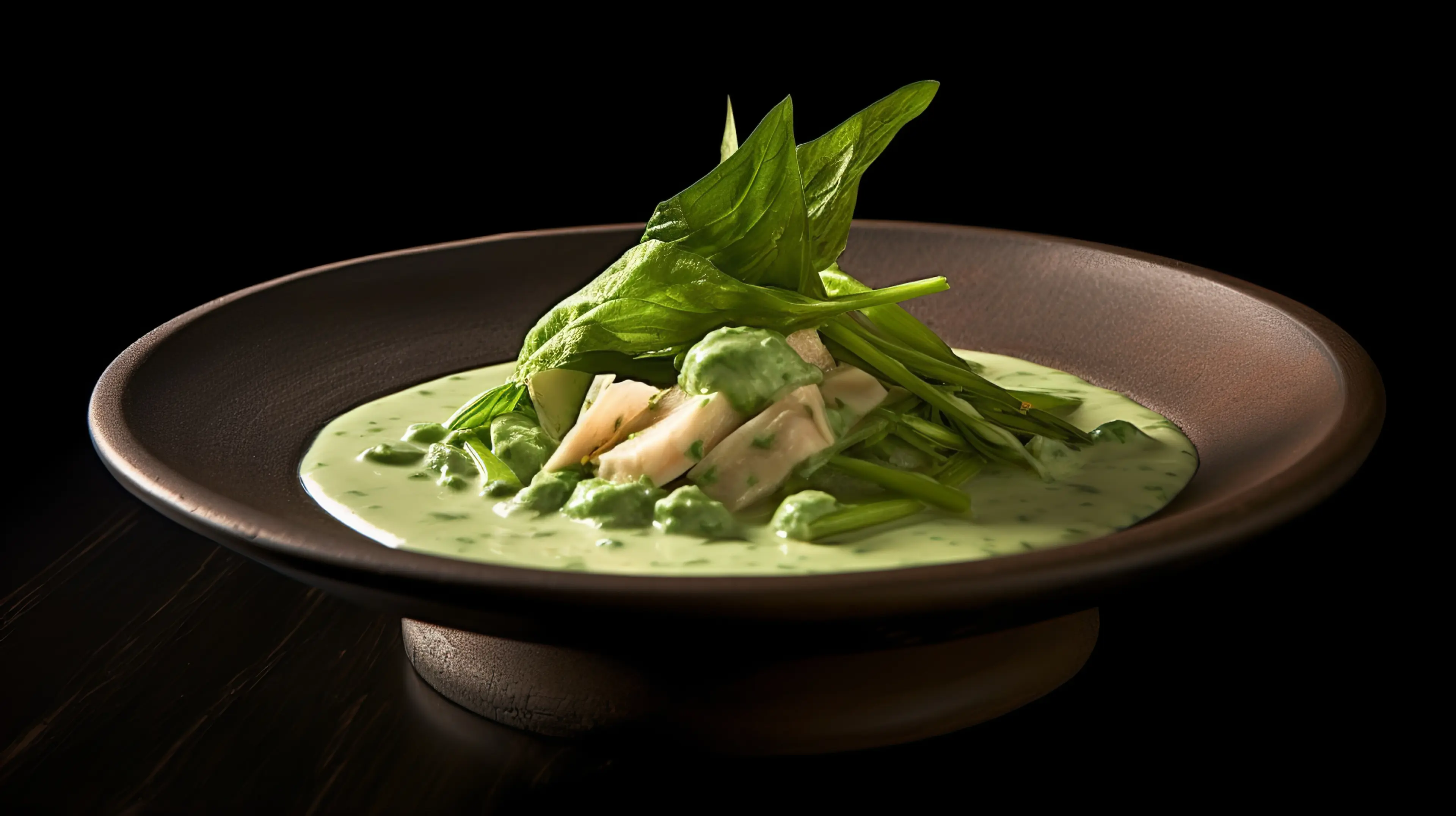
Rourou
A dish made from taro leaves cooked in coconut milk. It's a staple of the Fijian diet and is often served as a side dish.
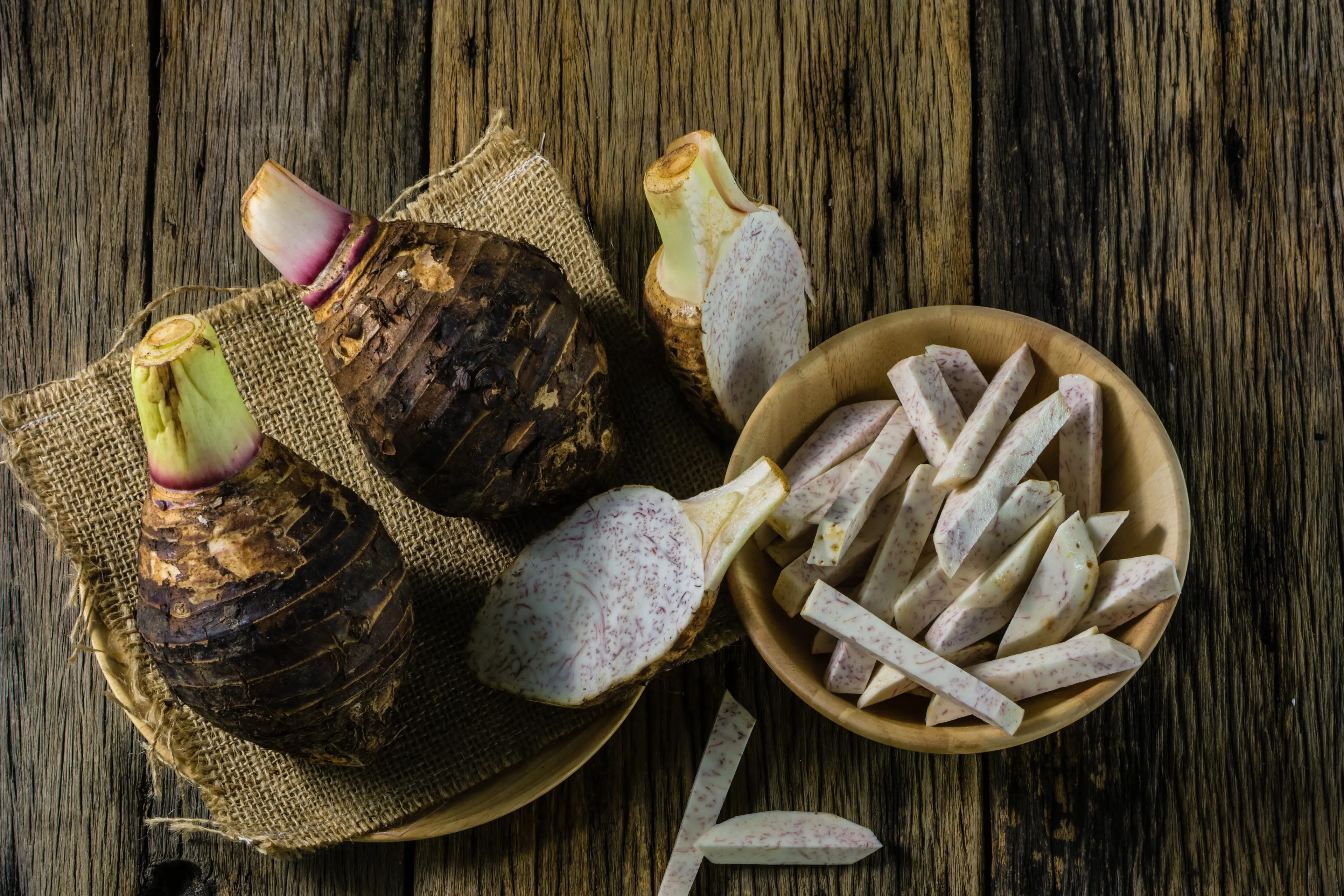
Taro
Taro is a root vegetable that is a staple in the Fijian diet. It can be boiled, baked, or fried and is often served as a side dish.
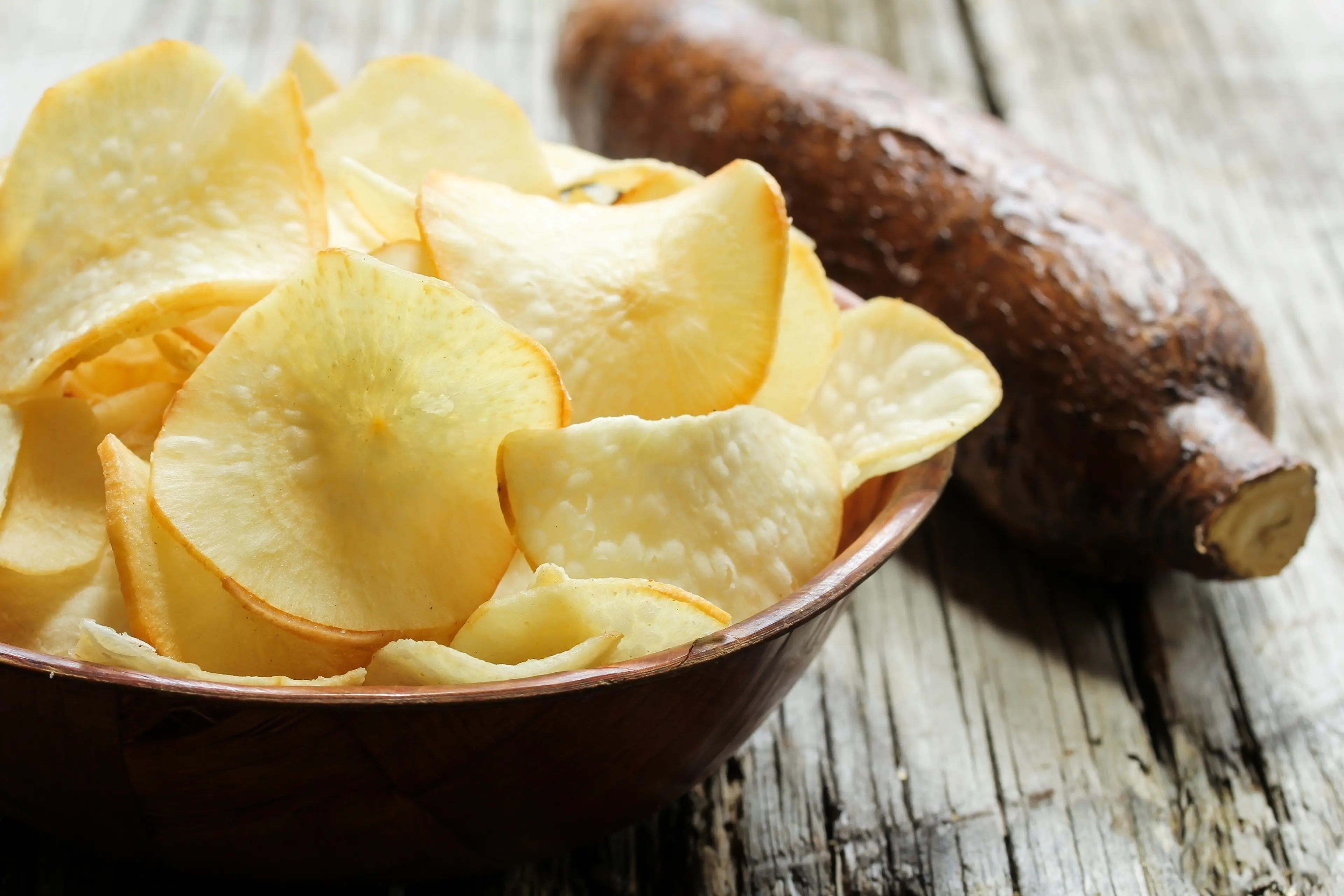
Cassava Chips
A popular snack in Fiji made from thinly sliced and fried cassava root. They are similar to potato chips and are often served as a snack or side dish.
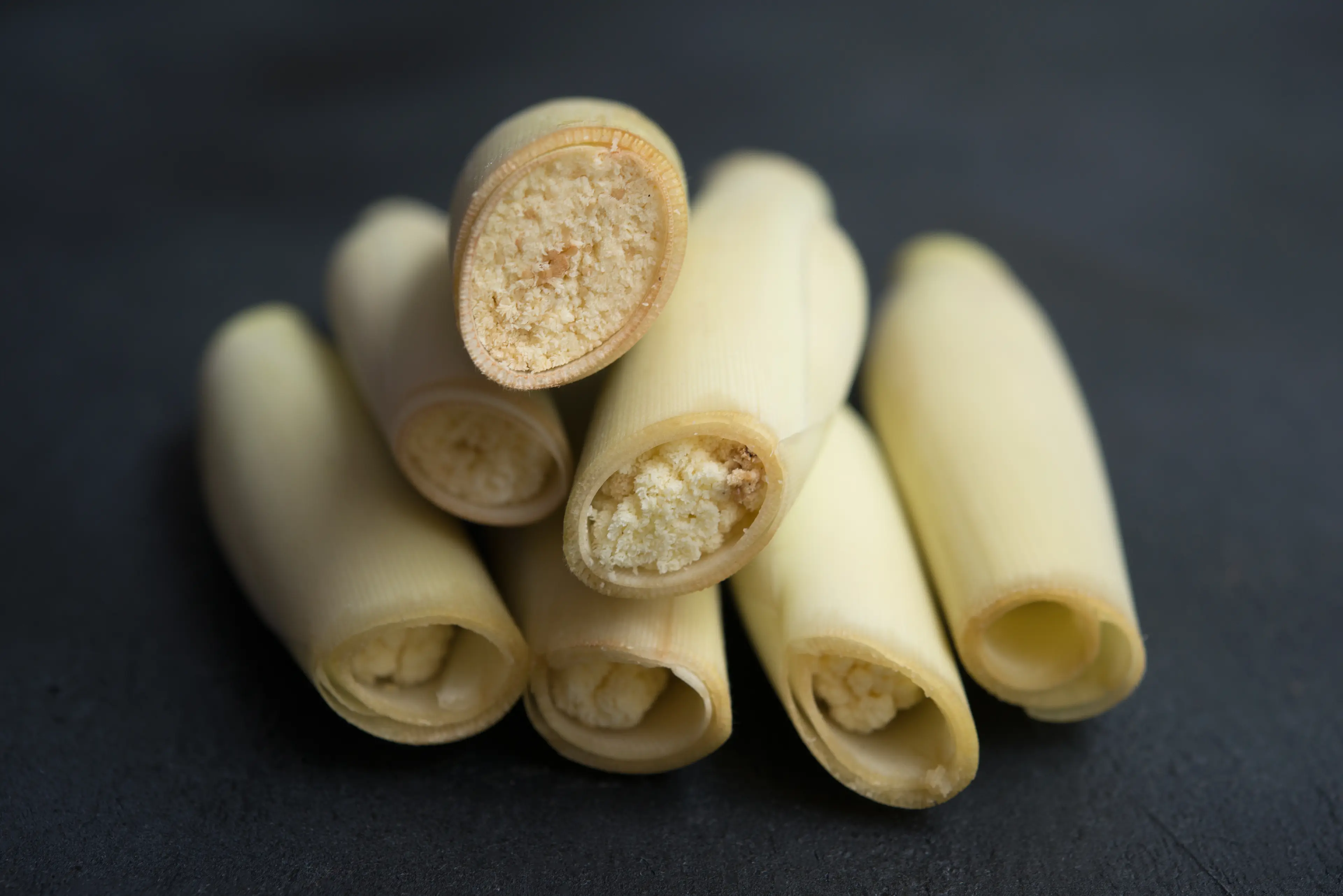
Duruka
A seasonal vegetable that is often referred to as Fijian asparagus. It's typically cooked in coconut milk and served as a side dish.
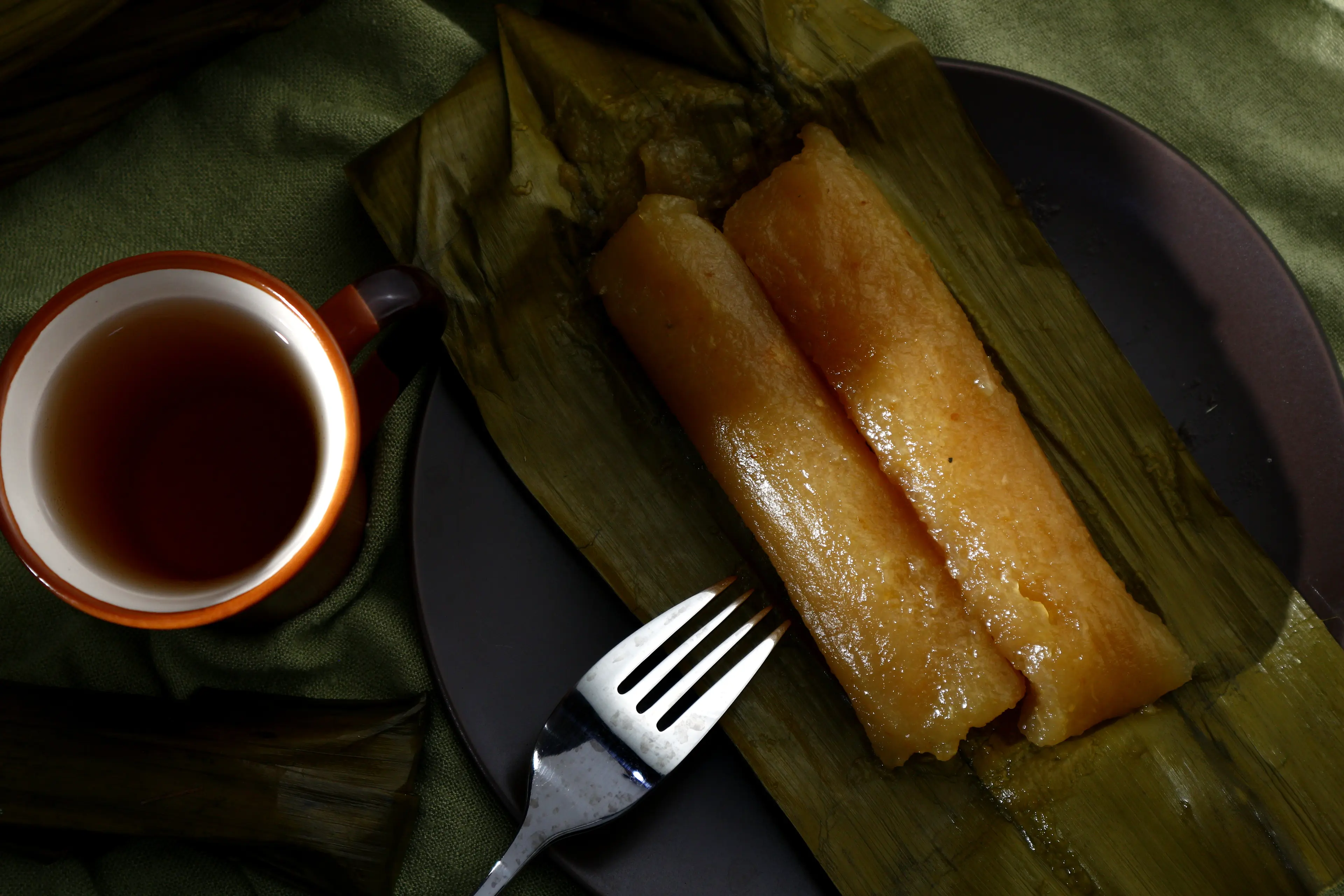
Vakalolo
A traditional Fijian dessert made from grated cassava, coconut milk, and sugar. It's often served wrapped in banana leaves.
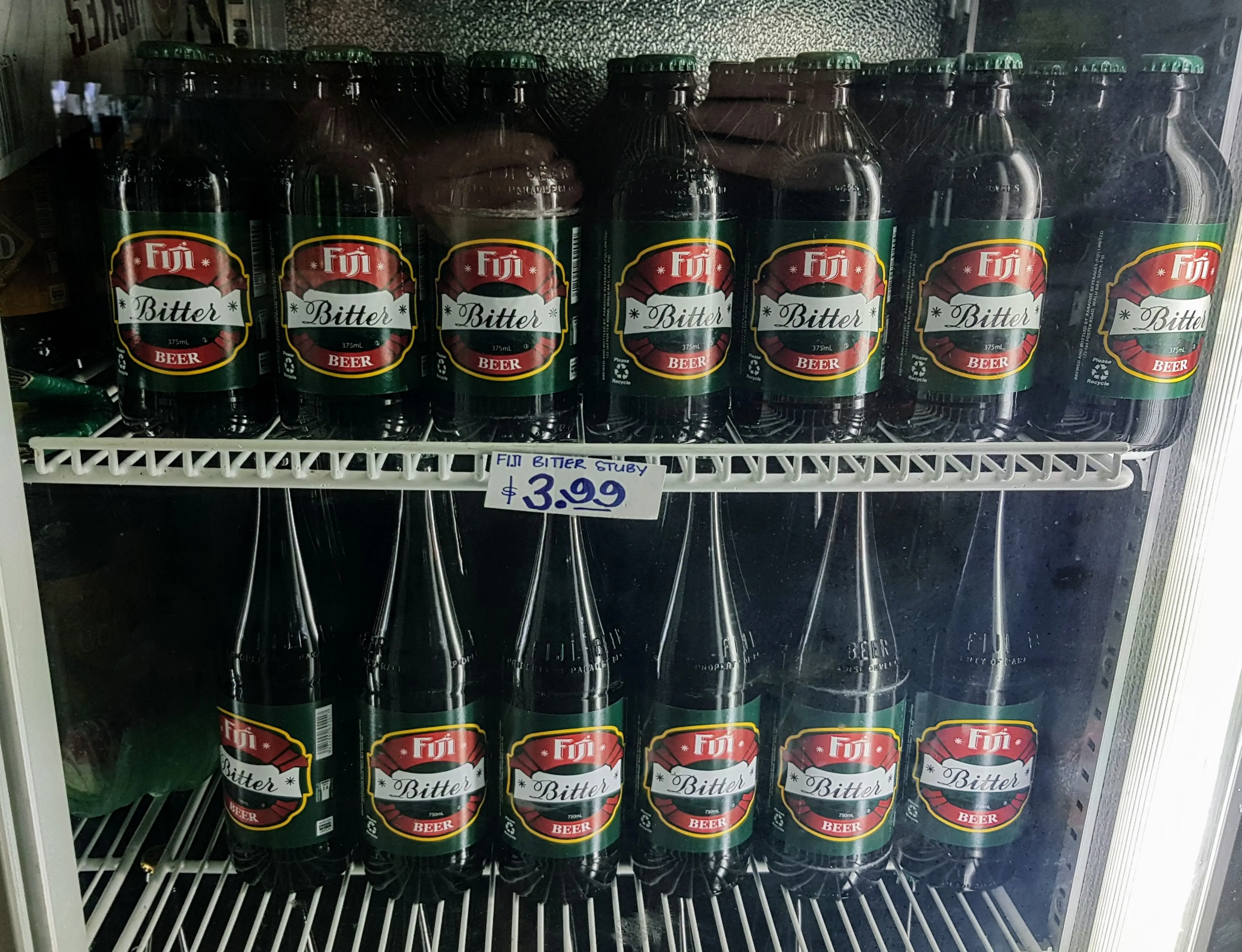
Fiji Bitter
A popular local beer in Fiji. It's a lager-style beer and is a favorite among locals and tourists alike.
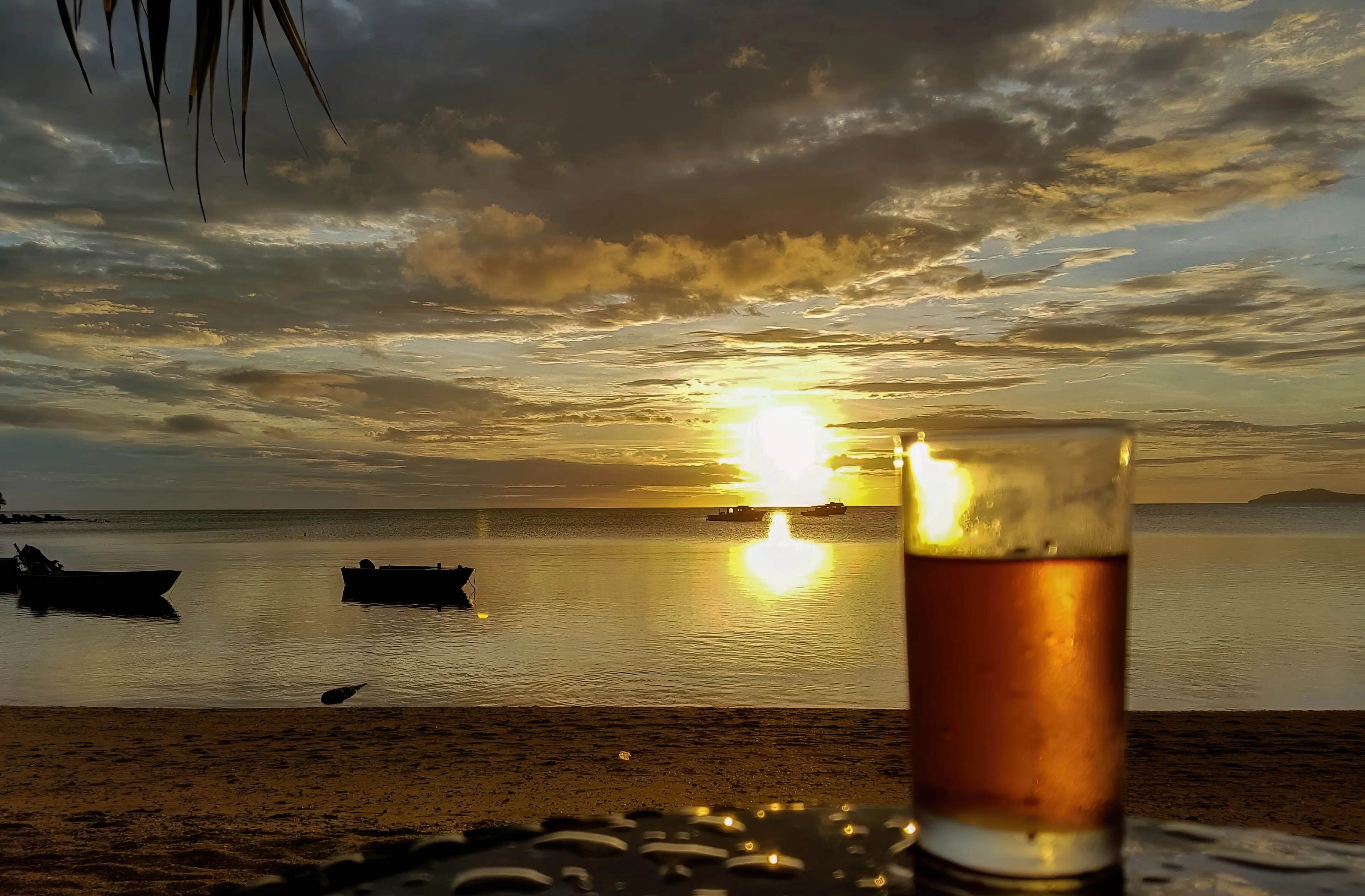
Fiji Gold
Another popular local beer in Fiji. It's a lighter, golden lager and is often enjoyed on the beach or after a day of exploring.
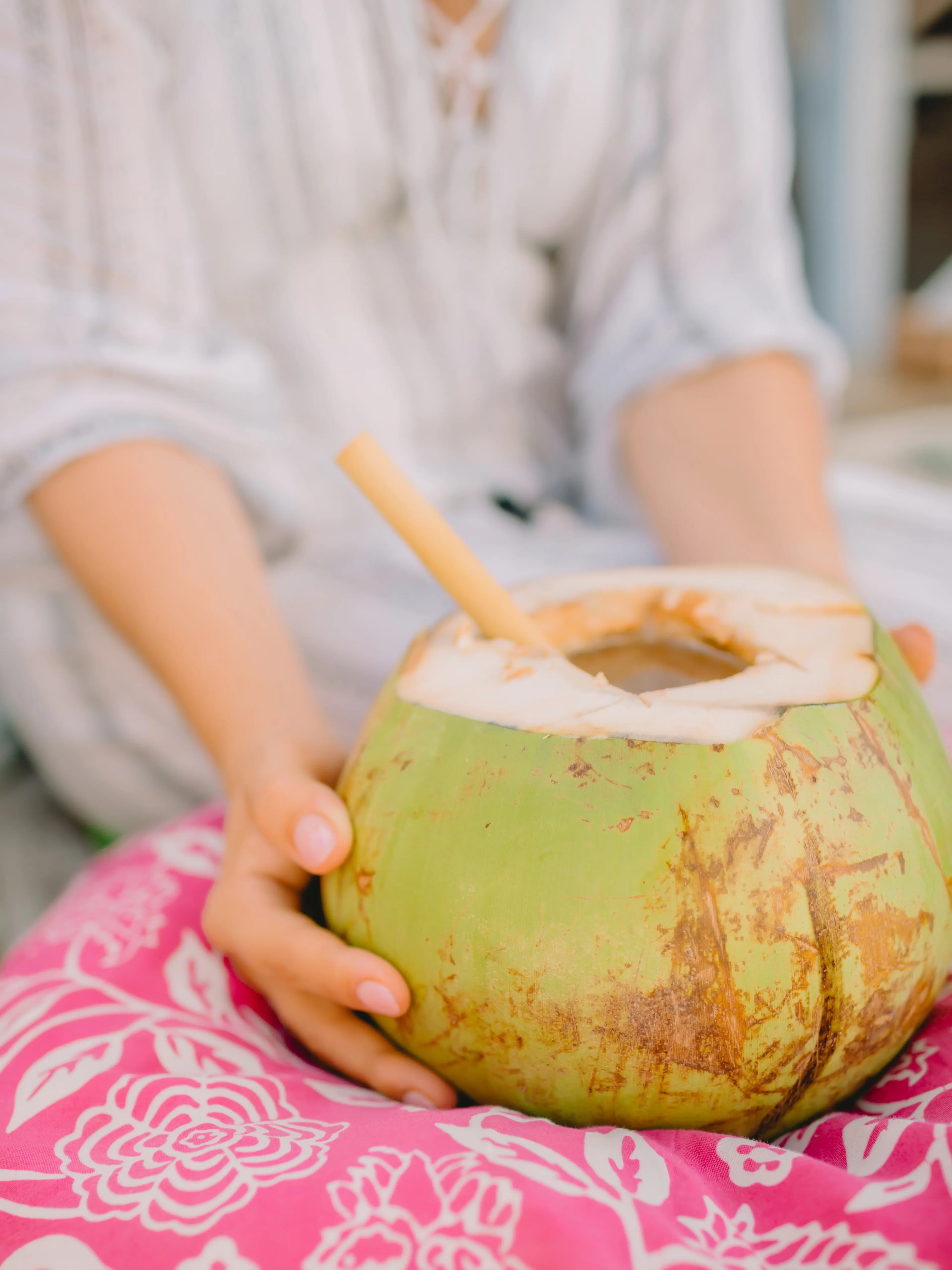
Coconut Water
Fresh coconut water is a popular and refreshing drink in Fiji. It's often served straight from the coconut with a straw.
Best time to visit
The best time to visit Fiji is during its dry season, which is from May to October. During this period, the weather is sunny and dry with less rainfall and humidity. It's also the best time for outdoor activities like snorkeling, diving, and hiking. However, this is also the peak tourist season so expect more crowds and higher prices. If you prefer a quieter time with fewer tourists, consider visiting during the shoulder seasons of April and November.
How to get around
Air Travel
Fiji's main international airport is Nadi International Airport. Fiji Airways, the national airline, provides international services to and from many major cities in the Pacific region. Domestic flights are also available to reach different islands of Fiji. Smaller airlines, such as Northern Air and Pacific Island Air, offer flights to the outer islands and scenic flights.
Car Rental
Car rentals are available at the airport and in major towns. Driving is on the left side of the road. An international driving license is required. It's a convenient way to explore the main islands at your own pace.
Taxi
Taxis are widely available in cities and towns. They are metered, but it's also common to negotiate a fare for longer trips. Taxis are a convenient way to get around, especially in urban areas.
Buses
Local buses are a common way to get around in Fiji, especially on the main islands of Viti Levu and Vanua Levu. Buses run on set routes and schedules. It's an affordable and authentic way to travel, offering a chance to meet locals.
Ferries
Ferries and catamarans operate between the islands, making it easy to explore the archipelago. Some routes are serviced daily, others less frequently. It's a scenic and relaxed way to travel, but can take longer than flights.
Ridesharing
Ridesharing services, such as Ola, are available in Fiji. They can be booked via a smartphone app. It's a convenient and often cheaper alternative to traditional taxis.
Private Transfers
Many hotels and resorts offer private transfers for their guests. This can include airport pick-ups and drop-offs, as well as transportation to local attractions. It's a hassle-free and comfortable way to travel.
Bicycles
In some areas, particularly on smaller islands, bicycles can be rented. It's an eco-friendly and enjoyable way to explore local surroundings at a leisurely pace.
Foot
Walking is often the best way to explore Fiji's towns and villages, as well as its beautiful beaches and nature trails. It's free, healthy, and allows for a closer connection with the local environment and culture.
Important information
Currency$ FJD
Time zoneUTC+12
Driving sideLeft
Emergency phone911
Drinking waterYes, but some opt for bottled water
Power sockets
Voltage240 V
Things to know about Fiji as a first time visitor
1
Fiji is located in the South Pacific and is made up of 333 islands.
2
The official language is English, but Fijian and Hindi are also widely spoken.
3
Fiji has a tropical climate. The average temperature in the cooler months (May to November) is 72°F (22°C) and in the warmer months (December to April) is 88°F (31°C).
4
Fiji has a wet season (November to April) and a dry season (May to October). The wet season is characterized by heavy, brief local showers and contributes most of Fiji's annual rainfall.
5
The local currency is the Fijian Dollar (FJD). Credit cards are widely accepted in urban areas and at most resorts and hotels.
6
Tipping is not customary in Fiji and is often politely declined. It's better to show your appreciation through kind words or a small gift.
7
Fiji operates on Fiji Standard Time, which is 12 hours ahead of Greenwich Mean Time (GMT).
8
Fiji has a 220-240 volt electricity supply, the same as Australia and New Zealand. If you're traveling from a country with a different voltage, you may need a voltage converter.
9
Fiji is a conservative country and it's important to dress modestly, especially when visiting villages. Avoid wearing hats or touching people's heads as it's considered disrespectful.
10
Fijians are known for their hospitality. It's customary to bring a small gift, like kava, when visiting a village.
11
Fiji has a risk of tropical diseases like dengue fever, zika, and typhoid. It's recommended to take precautions against mosquito bites and ensure your vaccinations are up to date.
12
Tap water in Fiji is generally safe to drink, but it's recommended to drink bottled water, especially in rural areas.
13
Fiji's emergency phone number is 911 for police, fire, and ambulance services.
14
Fiji has strict laws against drug use and possession. Penalties can include heavy fines and imprisonment.
15
Fiji has a diverse marine life and is a popular destination for snorkeling and diving. However, be aware of strong currents and always follow safety guidelines.
16
Public transportation in Fiji includes buses, taxis, and ferries. Rental cars are also available, but keep in mind that driving is on the left side of the road.
17
Fiji is located in an earthquake and tsunami zone. It's important to be aware of safety procedures in case of a natural disaster.
18
Fiji has a high UV index and the sun can be intense. It's recommended to wear sun protection, such as sunscreen, a hat, and sunglasses.
19
Internet access is available in urban areas and at most resorts and hotels. However, it may be limited or slow in rural areas.
20
Fiji has a rich cultural heritage, with traditional customs and ceremonies. It's important to respect these traditions and ask permission before taking photos or videos.
Packing List
Clothing
Lightweight clothing
Swimwear
Beach cover-up
Underwear
Socks
Sleepwear
Flip flops
Water shoes
Sun hat
Sunglasses
Light rain jacket
Toiletries
Travel-size shampoo
Travel-size conditioner
Travel-size body wash
Deodorant
Toothbrush
Toothpaste
Razor
Shaving cream
Sunscreen
After-sun lotion
Insect repellent
First-aid kit
Prescription medications
Contact lens solution
Travel documents and essentials
Passport
Driver's license
Credit cards
Cash
Travel insurance documents
Hotel reservation confirmation
Airline tickets
Electronics and gadgets
Smartphone
Charger for smartphone
Power bank
Waterproof camera
Memory cards for camera
Travel adapter
Miscellaneous items
Snorkeling gear
Beach bag
Travel pillow
Earplugs
Eye mask
Travel guidebook
Water bottle
Snacks
Weather Conditions
Fiji, a tropical paradise in the South Pacific, experiences a warm tropical climate year-round. However, there are two distinct seasons - the dry season from May to October and the wet season from November to April. During the dry season, temperatures average around 72°F to 86°F (22°C to 30°C). It's the perfect time to enjoy outdoor activities like hiking, snorkeling, and beach lounging. The weather is generally sunny and less humid, making it the peak tourist season. It's advisable to book accommodations and activities in advance during this period. The wet season sees temperatures ranging from 75°F to 88°F (24°C to 31°C). This season is characterized by heavy, brief local showers and contributes to Fiji's lush green landscapes. While the humidity can be high, it's a great time to visit for those who prefer a quieter vacation with fewer tourists. However, it's also cyclone season, so it's important to stay updated on weather forecasts and advisories. Regardless of when you visit, remember to stay hydrated and protect yourself from the sun. The UV index in Fiji can be quite high, so wearing sunblock, hats, and UV-protective clothing is recommended. Also, pack lightweight, breathable clothing and a waterproof jacket, especially if you're visiting during the wet season. Lastly, keep in mind that Fiji's weather can vary significantly between regions. The western and northern parts of the islands are usually drier, while the eastern and southern parts receive more rainfall. So, plan your activities accordingly based on the local weather conditions.
| Month | Hi / Lo (°C) | Weather Overview |
|---|---|---|
January | 31° / 22° | January is the warmest month in Fiji with high humidity and frequent rain showers. It's the peak of the wet season, so pack your raincoat. |
February | 31° / 22° | February is still in the wet season with high temperatures and humidity. Expect frequent rain showers, but also enjoy the lush greenery. |
March | 31° / 22° | March sees the end of the wet season, with temperatures still on the higher side. Rain showers are less frequent, making it a good time for outdoor activities. |
April | 30° / 21° | April marks the beginning of the dry season with less rainfall and slightly cooler temperatures. It's a great time to explore Fiji's beaches and forests. |
May | 29° / 20° | May has pleasant weather with moderate temperatures and low rainfall. It's an ideal time for snorkeling and diving. |
June | 28° / 19° | June is one of the coolest months in Fiji with low humidity. It's a perfect time for hiking and exploring the highlands. |
July | 27° / 18° | July is the coolest month in Fiji, with low humidity and little rain. It's a great time for outdoor activities and exploring the islands. |
August | 27° / 18° | August continues the cool and dry trend, making it a popular month for tourists. Enjoy the sunny days and cool nights. |
September | 28° / 19° | September sees a slight increase in temperature but remains dry. It's a great time for water sports and beach activities. |
October | 29° / 20° | October marks the beginning of the wet season, but rainfall is still low. It's a good time to visit before the heavy rains start. |
November | 30° / 21° | November sees an increase in rainfall and humidity. However, it's still a good time to visit as heavy showers are usually short-lived. |
December | 31° / 22° | December is a festive month in Fiji with warm temperatures and high humidity. Expect occasional rain showers, but there's still plenty of sunshine for beach activities. |
Did you know?
Places near by Fiji
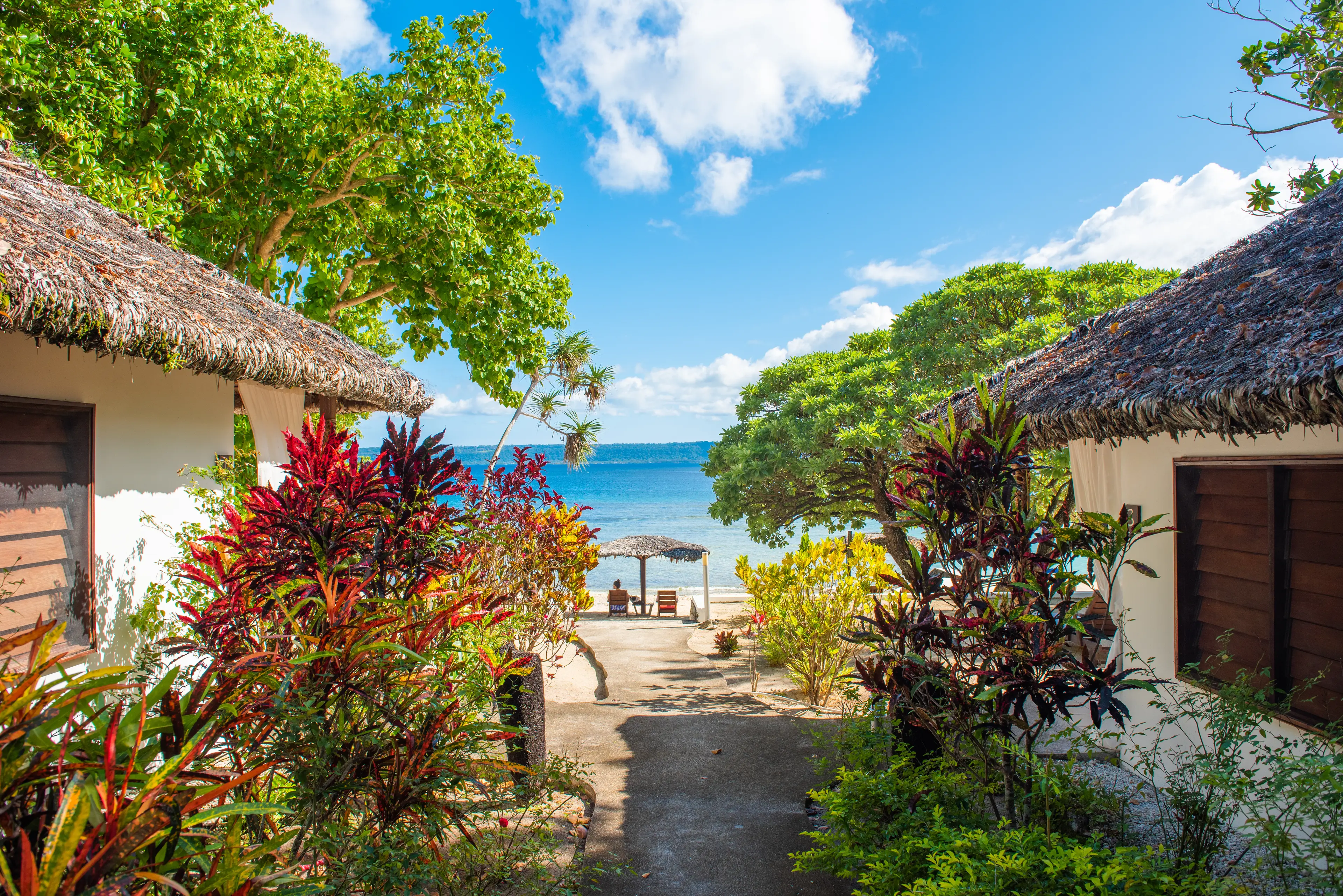
Vanuatu
An island nation located in the South Pacific Ocean. Known for its stunning beaches, active volcanoes and unique Melanesian culture.

Tonga
A Polynesian kingdom of more than 170 South Pacific islands, many uninhabited, most lined in white beaches and coral reefs and covered with tropical rainforest.

Samoa
Known for its stunning beaches, beautiful waterfalls and rich Polynesian culture.
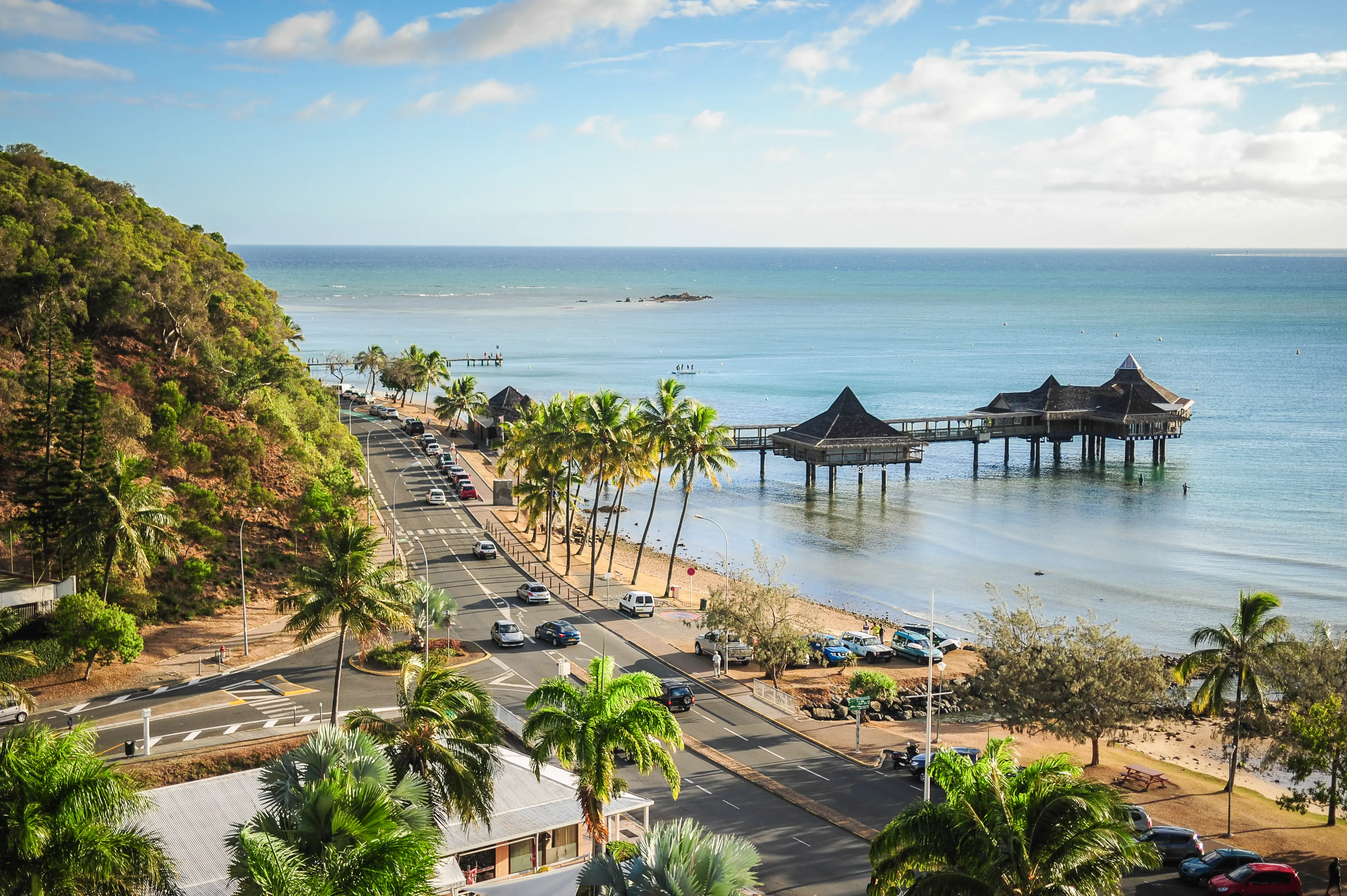
New Caledonia
A French territory comprising dozens of islands in the South Pacific. Known for its palm-lined beaches, marine-life-rich lagoon, which is among the world's largest, and its colourful marine life.
